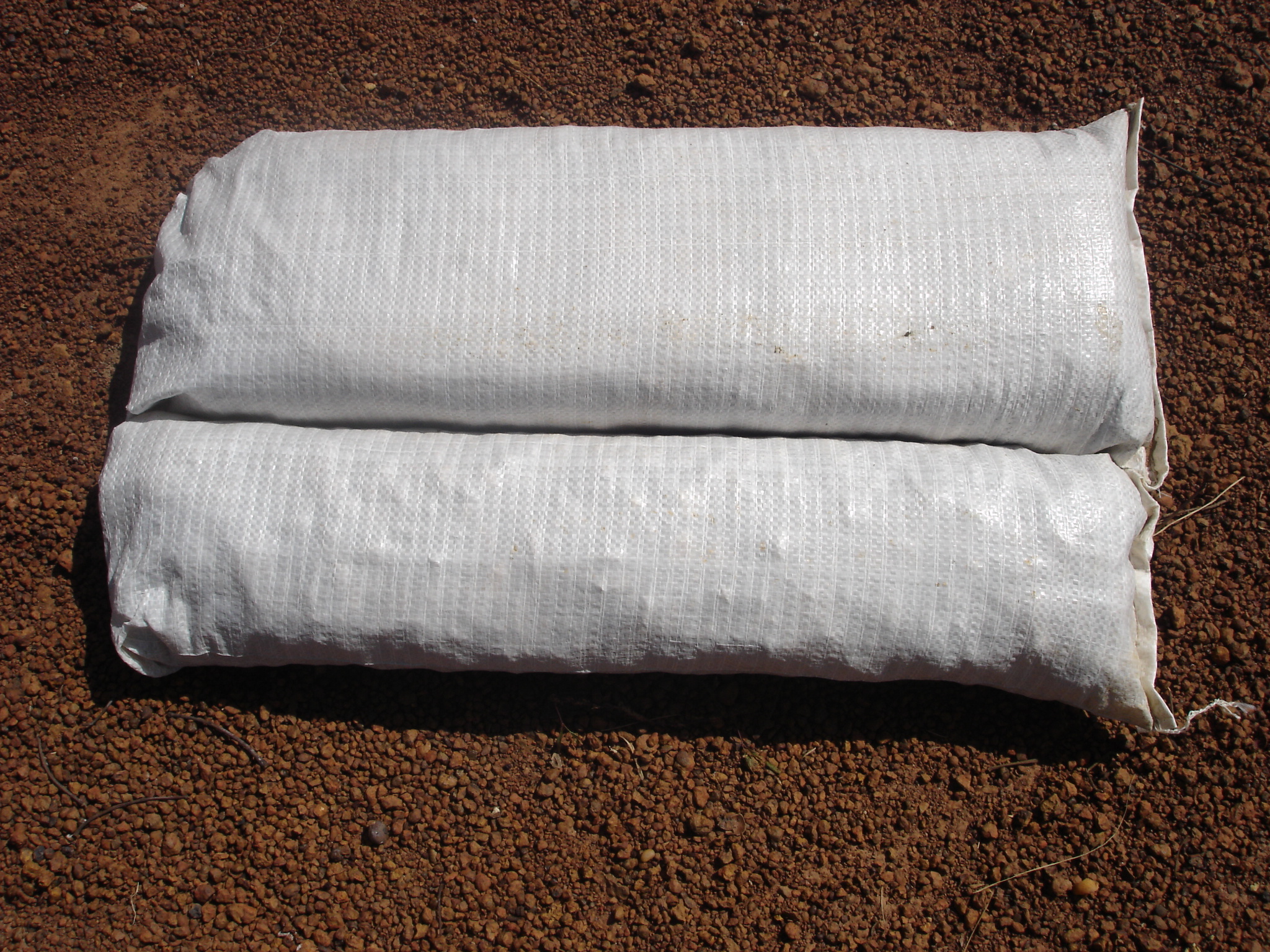Most earth structures such as adobe are located in hot, dry climates. But what if you live in a cold climate and want the benefits of low-cost earth building techniques? Earthbag building has the unique advantage of providing either thermal mass or insulation, and therefore can be adapted for cold climates with an insulated fill material. Scoria, pumice, perlite, vermiculite or rice hulls could all be used for insulation.
One possibility is to add a seam lengthwise down earthbags or polypropylene tubes to divide them into two compartments. The outer part could be filled with insulation; the inner part with soil. This would create an insulated wall with thermal mass on the interior. For many situations, this is an ideal wall system.

The placement of the seam could vary, depending on the climate. In a mild climate like New Mexico, I would add about 4”-5” of insulation on the outside. This would provide about R-10 insulation. In a slightly colder climate the seam could go down the middle (50% insulation/50% soil). In extremely cold or extremely hot climates I would fill the bags with 100% insulation (or all earth in a hot climate if insulation wasn’t available).
To read the entire article, go to SearchWarp.com.

Hello! We are looking to build an earthbag home in Armenia.. an area that has heavy snow through the winter months however over 300 days of sunlight and warm summers. We’ve been thinking about methods to increase the insulation qualities of our walls, and finding a lot of information suggesting use of volcanic rock. Here in Armenia there is an abundance of volcanic ‘tuff
https://en.wikipedia.org/wiki/Tuff
I am wondering if this can be a suitable substitute for pumice or scoria? Thanks so much!
If what you have is relatively lightweight and full of air pockets it should be insulating.
Thanks for the fast reply!! I’m reading that using this insulating material without adding g clay/sand is ideal to retain the insulating properties.. so no need to wet the tuff before bagging?
It shouldn’t be necessary to dampen the tuff; just tamp it well into place.
After reading about the use of perlite and adding seam for the bag to have insulation. Does the difference in weights of the bag cause an issue with strength of the wall. Would it tend to lean in?
The easiest way is to either build with scoria bags or add foam board insulation on the exterior of earthbags. Also consider building with straw bales.
The issue of filling the bags on top of a wall is a tricky one. There are smaller size polypropylene bags that measure 14X21. Would it just be easier to, as your building your earthbag walls, make a second concurrent insulating wall with smaller bags filled with perlite? I mean, building your dream house will take time, and I like this idea because it could allow for recessed shelves.
I wish there were workshops for earthbag building on the east coast. I have a lot of ideas and not a drop of practical knowledge.
The walls will be too narrow and unstable if you use only 14×21 inch bags. Use 18×30 bags. It is okay to build a 2nd wall if you want, but that’s a lot of extra work.
Planning earthbag terraced seated patio area.
Semicircle ,radius 135cm and 3ft tapering wall into side of hill with sandbags.
Not attempted anything like this before wondering if 14x21bags will be ok, as easier to manage , will be outside, then cover with suitable plaster ,in damp Derbyshire.
Any advice gratefully received.
Mary
Yes, I think that size bags should work out just fine.
Many thanks for quick reply ?
No need to make a seam. Your chute idea will work fine. Just have two removeable long chutes (pieces of AC ducting or possibly a short length of downspot). Have the chutes reach all the way to the bottom of the bag. Fill each side accordingly. remove the chutes from the bag. Each chute is nothing more than a long square or rectangle tube and should slide out of the bag/soil. You may have to build special sized tampers to compact each side a bit. Or you can can tamp the bag after you put it in place.
interesting idea :)
H
What a great idea!
Is this only practical on the larger size bags? I’d like to hear how awkward it gets to fill them. I suppose you might want to load lightweight gravel in first, so it was still easy to handle and pass down to the soil filling station.
I’d also like to hear how much more time this takes to fill.
Good questions. This is a new idea I’ve just started experimenting with and there’s still more to learn. The one bag I filled wasn’t difficult or awkward, but then again I wasn’t balancing on top of a wall… Total fill time is about double that of using one fill material. I recommend using bucket chutes (one for each side) to make it easier. This system will work on typical 18″ wide bags. I think adding the insulation first is the easiest method. Perlite is highly recommended for it’s light weight and high R-value.